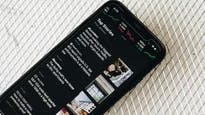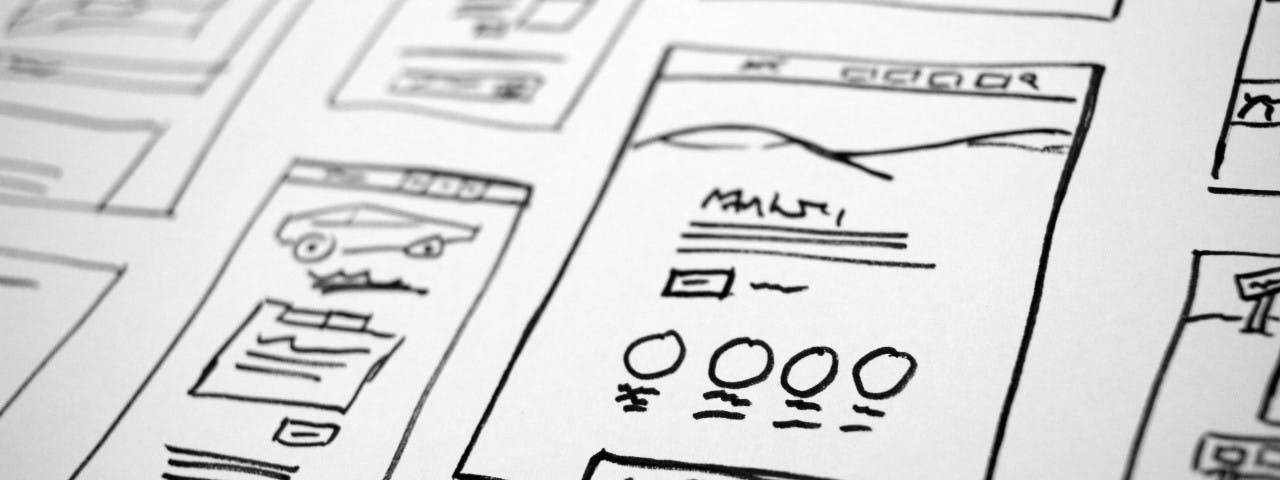In our previous article, we highlighted the importance of developing a strategy as the first step in successful and purposeful web development. The second step, one that transforms this strategy into something tangible, is design. Marketing departments are driven by quantitative metrics: leads, conversion rates, sales, and Return on Investment (ROI). Design departments, on the other hand, focus on aestheticism and UX. How to unite them?
The answer is through Conversion-Centred Design (CCD), a unique framework combining creativity and analysis to develop high-converting websites.
We’ve mentioned numerous times before that no website should rest on pure aestheticism and subjective design preferences. CCD does not ignore basic design principles, but what it does instead is merge them with human psychology and data. This approach makes it an optimal and necessary choice for those wanting to see the company’s business objectives align with the design and functionality of their website.
Conversion-Centred Design
The main purpose of conversion-centred design is to guide a user toward achieving a single business goal, such as a sign-up, a download, or a purchase. It is relentlessly focused on that one moment of conversion, or as its founder Oli Gardner writes:
“CCD is the art of turning passive browsers into active participants.”
In order to encourage a specific user action, it utilises unique design principles and psychological triggers, all grounded in data. To be effective, the approach needs to rely on continuous testing and analysis, including A/B testing, developing user personas and customer journey maps to understand user behaviour, and key metrics that guide future optimisations.
The 7 Principles of Design that Converts
With conversion-centred design, every element of the website is intentionally designed and placed, from the copy to the buttons. All of it works together, and it works towards the same goal - the user making a conversion. It resides on seven principles:
Clarity
The principle of clarity is in instant comprehension, by answering the questions: “Am I in the right place?” and “What’s in it for me?”. Since the visitor forms a strong impression of your website and its visual appeal in only 50 milliseconds, the principle of clarity aims at answering these questions immediately and persuasively.
This principle is not first on the list by chance. If you fail to comprehensibly state what the website is about, your visitors will likely abandon the site at the very beginning of their search for answers. Clarity reduces wasted ad spend by ensuring visitors instantly understand the offer they clicked for.
Examples
- Headlines should focus on the primary benefit for the user. Instead of "Our Software Has AI Integration," try "Save 10 Hours a Week with Our AI Assistant” and focus on what the user gains from your solution.
- Supporting copy should work for the headline. Simply state user pain points and the advantages of the offer
- The supporting visual also reinforces the core message and is not just a placeholder.
- Microcopies alleviate user concerns or guide their next moves, such as “No credit card required,” “Create My Account,” “Get Your Free Guide.”
Focus
While the natural impulse in design may often be that adding more is better, in terms of explaining in more detail, or offering multiple options, the principle of Focus does the opposite. Every element has to contribute to the common goal. If not, it is redundant.
The concept of Attention Ratio suggests that your website’s design should minimise distractions, focusing on the ratio between all possible actions a user can take and the one primary action you want them to complete.
Examples
- Hiding secondary information further down, within interactive elements, or on a different page
- Whitespace surrounding CTAs to draw attention and reduce visual clutter
A focused layout means marketing teams can better attribute results and reduce the “noise” that often muddies campaign reporting.
Direction
The core idea behind this principle is that design should guide. The user should not think about what to do next, they should, instead, have a clear and compelling path toward the goal.
Examples
- CTAs design must stand out with size, shape, and colour.
- Encapsulation is done by placing visual borders or coloured containers around important elements, isolating the element and signalling its importance.
Urgency
By using powerful psychological triggers, the user is motivated to complete the action now - usually done through the mechanism of scarcity or urgency.
The principle of scarcity states that a person will value rare things more highly. The principle of urgency taps into a sense of impending loss and the fear of missing out, with the pain of losing something being twice as powerful as the pleasure of gaining something, resulting in immediate action. For marketers, urgency drives quicker conversions, shortening the sales cycle.
Examples
- Countdown timers visually reinforce the user to take urgent action.
- Indicators of limited stock options display the number of items available, again motivating the user to act before it is too late.
Relevance
This principle is built on the psychological need for coherence and consistency. If they visit your website by clicking on an ad or a link, they have already formed a model of what to expect once they reach the website. Thus, the design and the message of your website must directly correspond to the source that brought the user there. If not, the result is cognitive dissonance, which for you means an increase in bounce rates.
Examples
- A matching message should both guide the user from your ad and welcome them on your website. If an ad states “50% Discount on Winter Boots,” the landing page must repeat the message as is, and not be replaced with a generic one “Shop Our Winter Collection.”
Credibility
Before a user converts, they must believe. They have to be sure that their action, whatever it ultimately is, is secure. Psychologically, the key principles in action are social proof (conforming to actions and beliefs of others) and authority (trusting credible and recognisable experts/institutions).
Examples
- Customer/client testimonials and reviews, especially from third-party sources like Google, can increase conversions by 270%.
- Case studies showing your approach to problem solving, along with the direct results, provide concrete evidence of your expertise and value.
Credibility elements reduce hesitation and increase lead quality, which is essential for high-value transactions.
Simplicity
Cognitive load is the total amount of both mental and physical effort utilised to complete an action. Every additional second of waiting, every additional click, form, or action increases this cognitive load, possibly resulting in frustration and abandoning the task. To avoid losing the user along the way to a conversion, the cognitive load needs to be minimised, as much as possible.
Examples
- Page speed optimisation to avoid delays that lead to high bounce rates.
- Form optimisation with only essential information, autofill, smart defaults, and multi-step for longer forms.
Design That Leads to Conversions
We’ve emphasised more than once that a website is not built on speculation.
By using data and psychology - by focusing on your potential visitors and understanding their behaviour - you can build a user-centric website that easily and naturally converts.
For marketing leaders, that means less reliance on campaigns to “make up for” a weak website, and more predictable, scalable growth from every traffic source you invest in.
With a compelling and conversion-centred design in place, the next step is to build a sound technical foundation. More on that in our next article!






